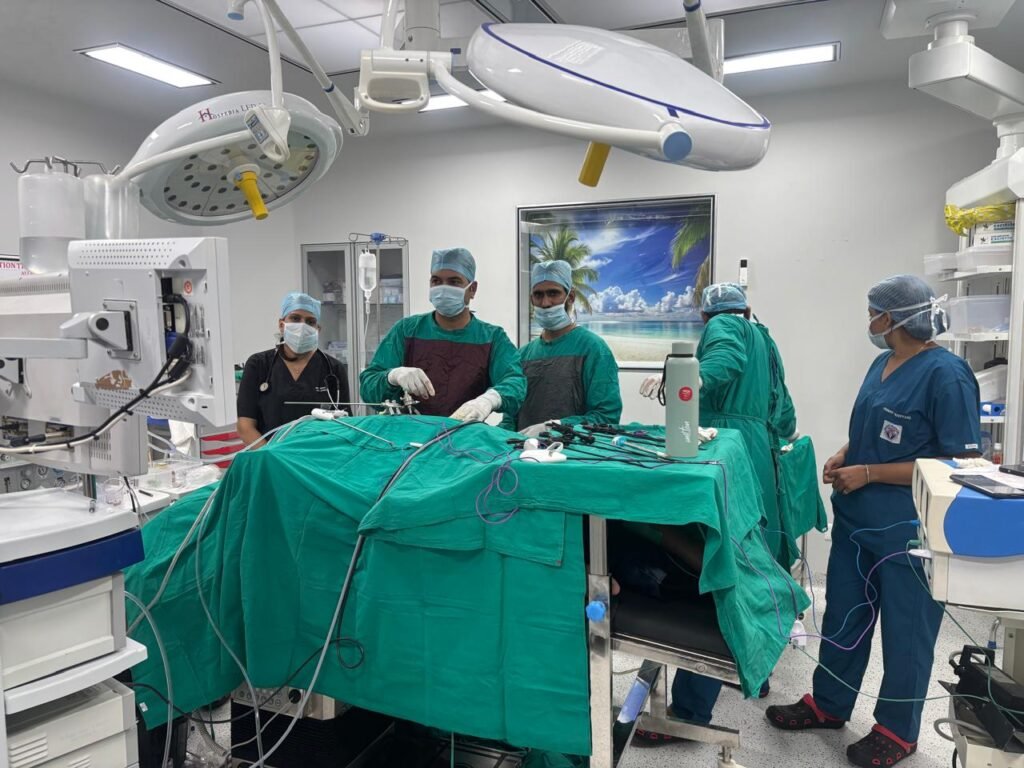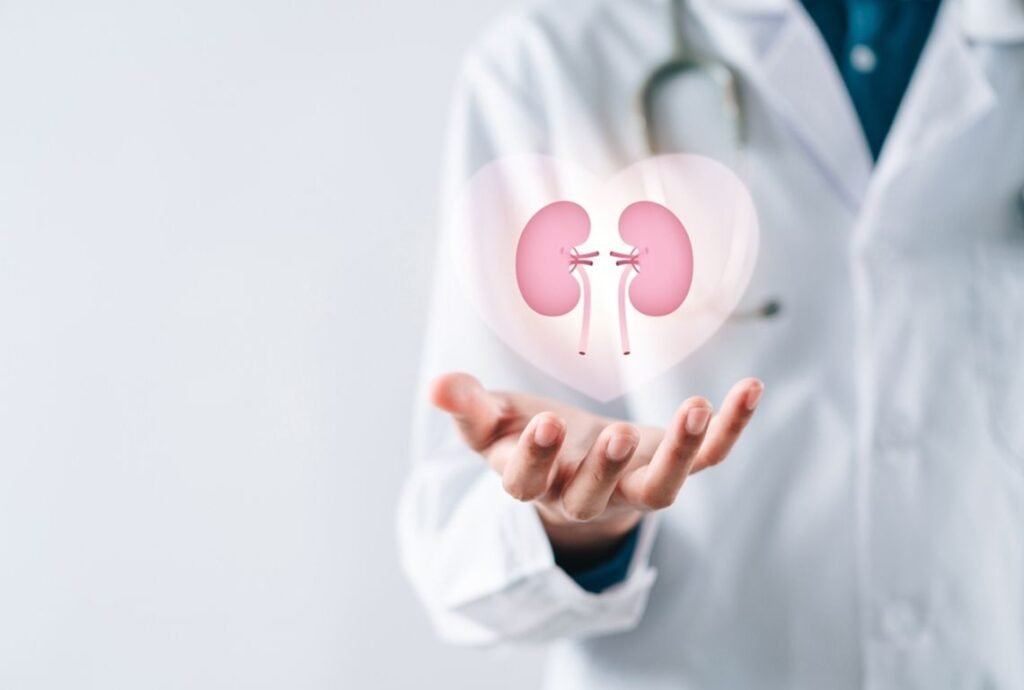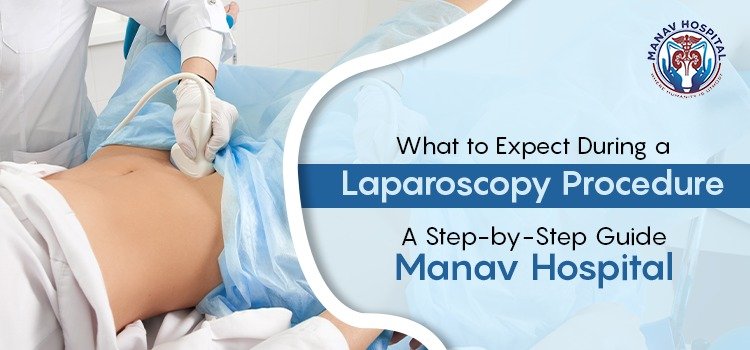Introduction
Several gynecological disorders in recent times have been diagnosed and treated through the removal of the uterus via laparoscopy. Compared to traditional open surgery, this technique offers significant benefits, including quicker recovery, minimal postoperative pain, and fewer complications. Understanding the details of this procedure can help women make informed decisions about their treatment options.
At Manav Hospital, a leading center for advanced gynecological care, expert surgeons employ state-of-the-art laparoscopic techniques to ensure safe and effective uterus removal. With a focus on patient well-being, Manav Hospital provides comprehensive consultation and personalized treatment plans, helping women receive the best possible care for their condition.
Understanding Laparoscopic Surgery to Remove Uterus
Laparoscopic surgery is a minimally invasive procedure used to remove the uterus, commonly performed for conditions like fibroids, endometriosis, abnormal bleeding, or uterine cancer. In this procedure, surgeons make several small incisions in the abdominal area. A tiny camera, known as a laparoscope, is inserted through one of these openings, providing a clear view of the internal organs.
Using specialized surgical instruments, the surgeon can accurately perform the removal of the uterus without the need for a large abdominal incision, as required in traditional open surgery. This advanced method results in less damage to surrounding tissues, minimal scarring, and a faster recovery time.
Women undergoing laparoscopic hysterectomy experience less pain, fewer complications, and a shorter hospital stay, allowing them to return to normal activities sooner. This technique is widely preferred due to its efficiency, precision, and reduced post-operative discomfort.
Who is the appropriate candidate for Laparoscopic surgery to remove uterus?
It is used during the removal of the uterus. This is for women with uterine fibroids, endometrial tissue growth, irregular uterine bleeding, or cancer of the uterus. This procedure, however, is not that useful when the uterus is huge as this might create complexities during the operation. More so, a classic open surgery could be needed when the uterus has grown huge or with any complicating conditions.
Ideally, women without any health disorder, with no disease that may be a risk to the surgery, and who are not obese would be the preferred candidates. Women have to go for consultation with a doctor about their medical history and particular situations to determine if they would qualify for laparoscopic surgery. A doctor would consider the health condition of the uterus, patient, and other factors to prescribe the proper procedure to follow.
What Has to Expect Before, During, and After Surgery
An evaluation will be done on the patient before uterine removal through laparoscopic surgery. Blood tests, ultrasounds, MRIs, and medical history reviews usually make up the evaluation process. A specialist will discuss each procedure in as much detail regarding risks and all that a person can expect throughout the recovery phase.
On the day of actual surgery, there will be complete unconsciousness as general anesthesia to the patient is given without feeling even a single type of pain anywhere at any particular time during this whole procedure. Through several small cuts at the lower and upper areas near the navel, the abdominal cavity will be opened by laparoscopy, letting the surgeon look in and insert different surgical tools to eliminate the uterus.
The surgery will usually take a period of about 1 to 2 hours. As the surgery is also minimally invasive, the postoperative recovery is much shorter compared to the general surgical procedure and the pain is relatively minor. Normally, patients just spend one night in the hospital after surgery. Again, though, this would depend on individual recovery levels.
Postoperative patients are generally advised to take it easy during the first few weeks. Walking is encouraged to enhance circulation, but heavy lifting and strenuous exercises should be avoided. Most women can return to work and their normal activities within 2 to 4 weeks. More strenuous activities may have to be avoided for up to 6 weeks.
Risk and Possible Complications
Typically safe, laparoscopic surgery to remove uterus does carry risks inherent in any operation. Some complications include infection or bleeding or damage to one of the body’s surrounding structures, like the bladder and intestines. the threat of complications can be less, compared to when using open abdominal surgery. Reduced risk of contamination and faster recuperation time in laparoscopy is ensured because only relatively small incisions are needed since the procedure performed is done behind the abdomen via a thin tool.
Additionally, if complications arise during surgery, for instance, uncontrollable bleeding or failure to remove the uterus, the surgeon may have to resort to a more conventional open surgery. In such cases, women should always be informed about the risks beforehand, so they are prepared to make an informed decision and be ready for anything that may occur.
FAQ
How long will recovery take?
This surgical procedure to remove the uterus usually takes less time to recover compared to open surgery. A woman can regain her light activities within 2 to 4 weeks. Some women may need several months, but they experience much less pain during their recovery process.
Will it impact my hormones or sexual health?
If the ovaries are removed at surgery, a rapid drop in hormone levels induces menopause, although if ovaries are retained, hormone levels tend to stay relatively normal. For sexual health, some patients report discomfort initially with healing; many women feel better sexually healthwise after healing from surgery.
Can woman become pregnant after a laparoscopic hysterectomy?
It will not possible in future to coneive after this surgery. Because of utreus removal women is unable but other options are also there.
What should be my way of life now?
Post-uterus removal through laparoscopic surgery, adopting a healthy lifestyle can facilitate recovery. This can be supported by a well-balanced diet rich in nutrients and a sufficient intake of water, which can contribute to healing. Light physical activities like walking improve circulation and help prevent blood clots.
Conclusion
Laparoscopic surgery to remove the uterus has been one of the safest options among the many available procedures that several women choose when diagnosed with gynecological conditions. This minimally invasive technique is preferred due to its advantages, including quick recuperation, minimized pain, and reduced complications compared to open surgery.
At Manav Hospital, recognized as the Best Urology Hospital in Jaipur, expert surgeons utilize advanced laparoscopic techniques to ensure precise and effective uterus removal. With the availability of state-of-the-art medical infrastructure and experienced specialists, patients receive high-quality care, ensuring a smoother and faster recovery.
Understanding the benefits, risks, and overall impact of the procedure helps women make informed decisions about whether laparoscopic surgery is the right choice for them. Manav Hospital remains committed to providing the best gynecological and urological care, prioritizing patient safety and comfort.





